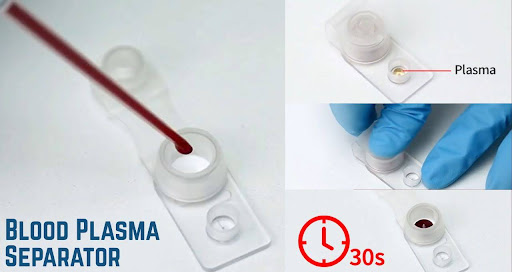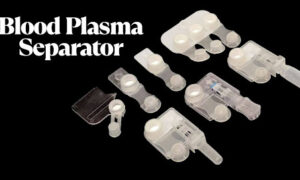Blood is not only a symbol for life in contemporary medicine — it’s a therapeutic mainstay. Blood components are used to carry out a range of activities, from crisis transfusions to sophisticated therapies such as immunoglobulin production and coagulation factor replacement. One of the devices that is revolutionizing the way we isolate and use these components is the blood plasma separator. The machine is not a page-one story, but its impact on diagnosis, treatment, and laboratory study is enormous.
Let us follow the twisted route of blood — from venipuncture to life-maintaining therapy — and how the blood plasma separator became a key link in the chain.
Learning About Blood Components and What They Mean
Whole blood is divided into four major parts: red blood cells, white blood cells, platelets, and plasma. Plasma contains over half of the volume of blood and contains water, salts, enzymes, antibodies, and other simple proteins.
It was established by the medical sciences that all the constituents are more useful individually. For example:
- Platelets are priceless in cancer patients and patients with clotting disorders.
- Plasma is also employed in the treatment of immune deficiency, shock, and burns.
- Red blood cells restore oxygen capacity in trauma patients.
But equipment such as the blood plasma separator must be available for such a segmentation to occur.
How Blood Plasma Separator Works
The blood plasma separator works to remove plasma from blood cells. This usually occurs via centrifugation or membrane filtration.
In centrifugal separators, blood is spun at high velocities, and blood components drop through a gradient of densities — plasma on top, red cells at the bottom. In membrane separators, plasma-permeable membranes are utilized that will permit passage of plasma but not the larger cellular elements.
They are used in the clinic (e.g., apheresis) and, in the laboratory setting, for preparation of samples. Some systems directly interface with blood sampling equipment, automatically aliquoting the sample at time of collection.
Plasma Collection: The First Step in Therapeutic Use
Plasma donation differs slightly from donating whole blood. In plasma donation (plasmapheresis), there is a clear involvement of the blood plasma separator. The blood is extracted, separated, and the remaining part is returned to the donor.
It is all made possible with the help of real-time operating machines that subject no considerable red cell loss to the donors and which allow rapid recovery.
The plasma, after being harvested, is frozen or processed according to the application — therapeutic or diagnostic.
From Separation to Processing: What Comes Next
After plasma is harvested, it’s tested and processed quite extensively. Each process is quality-checked and safe. Plasma is typically fractioned into several of the following products:
- Albumin: Employed in the treatment of shock and blood loss
- Immunoglobulins: Required for immunedisorder patients
- Coagulation factors: Required for hemophilia patients
High processing methods further clean these proteins for therapeutic applications. Blood plasma separators provide reproducible sample quality in research and biotech, allowing everything from clinical research to drug development.
Clinical Applications: How Plasma Saves Lives
Plasma therapy uses are widespread and on the rise. Patients with chronic illness, acute infection, and autoimmune illness depend most commonly on plasma therapies.
Examples:
- COVID-19 patients in the early days of the pandemic were given convalescent plasma to enhance immunity.
- Guillain-Barré Syndrome is also managed with intravenous immunoglobulin that is prepared from plasma.
- Burn patients are also administered albumin therapy for fluid balance in optimal health.
In all these treatments, it begins with an excellent product of plasma — and the blood plasma separator is an important key to making this happen.
Advances in Blood Plasma Separator Technology
With the growing medical need, so does the complexity of separation technology. Newer blood plasma separators are now:
- Lighter and faster: Bedside plasma separation in the emergency room is possible now through mobile equipment.
- Improved: Improved filters and computers yield improved plasma purity and recoveries.
- Data-contained with systems: Measurement of plasma volume and quality on-line guarantees procedure reproducibility.
Automation and AI are beginning to enter the scene, with machines that automatically adjust based on patient reaction or blood type. These not only streamline efficiency but reduce likelihoods of human error.
Global Impact: Meeting the Demand for Plasma
Plasma treatments demand is global — and growing. As cases of autoimmune diseases rise and the population ages, demand for plasma is projected to double in the next decade.
But the supply chain is tenuous. Not every nation has adequate donation infrastructure, and processing centers are centralized. Decentralization and localization can be facilitated here by the blood plasma separator. Automated and portable varieties can render sites independent of plasma gathering and processing.
Non-profit blood banks, government, and commercial plasma centers are all stretching for next-generation separation technology to provide an assured source of this coveted commodity.
Ethical Concerns and Donor Protection
As technology continues to advance, ethics must come first. Plasma donation, particularly in the developing world, at times is accompanied by issues of over-payment or health sacrifice in frequent donors. There needs to be informed consent, donor monitoring, and strict regulations.
Plasma separator also enhances safety through reduction of red cell loss and accurate measurement of plasma drawn in volume. Better equipment translates into greater comfort and protection for donors.
Secrets to maintaining a credible system include transparency in recruitment, regulation, and compliance with international safety standards.
More than Medicine: Research and Biotechnology Applications
Outside of clinical applications, plasma is also used in biotech development. Researchers employ it for research on biomarkers, screening drug candidates, and testing treatment for infecting diseases only just starting to erupt. Quality plasma is needed for meaningful findings — and that’s where blood plasma separators enter the picture.
In regenerative medicine and cancer therapies, precision gears are depended on by research laboratories to clean proteins or analyze immune response.
High-throughput plasma separators in the bloodstream prove to be making treatment more specific and discovery quicker.
A Critical Link in the Healthcare Chain
The journey of the blood does not stop with donation. It continues in processing, testing, and in the end, healing — in a cancer ward, an ICU, or a laboratory. The blood plasma separator is perhaps the hero of this tale without glory, but it’s certainly the key.
Its development is an expression of medicine’s general trends: toward efficiency, specificity, and individualization. As medical demand increases and science proceeds, such machines will become increasingly indispensable to cover the differences between medical demand and human generosity.
At a time when every drop matters, machines that enable us to get the most out of blood are nothing short of revolutionary.































